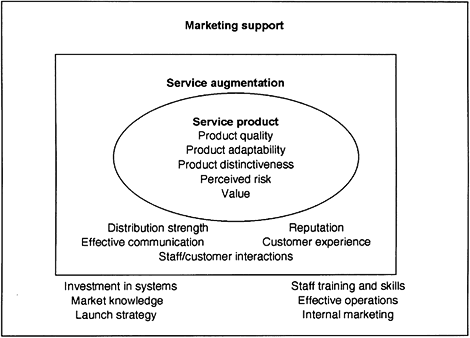FOOD
PRODUCT DEVELOPMENT
Mary Earle, Richard Earle and Allan Anderson |
| Loading
|
|
||||
|
|
Part
2, Chapter 3
The product development process 3.5.1 Services Services are intangible as compared with tangible products. They are intangible experiences that are produced and delivered simultaneously. An important feature of the service is that it is adaptable and can change with different customers; this is just about the opposite of the tangible product, which stays the same for all customers.
Service customers want individualised experiences that yield strategic benefits for them as individuals. The customer and the company employee are parts of the service; it is their interaction that is the service. Therefore service quality is highly variable, but it is very important, as the customer reaction is immediate (Terrell and Middlebrooks, 1996). The customer's concept of the service includes the company's service system as well as the company skills and knowledge. From the customers' point of view, important features of a service are (Walton, 1992):  treatment of the customer; treatment of the customer;
 speed and convenience of service; speed and convenience of service;
 price of the service; price of the service;
 variety of services; variety of services;
 quality of the tangibles that accompany the service; quality of the tangibles that accompany the service;
 unique skills that constitute the service offering. unique skills that constitute the service offering.
From the company's point of view, a service has three parts: the service itself, the augmented service (service firm's reputation, quality of the interaction with the firm's system and staff) and the marketing support (Storey and Easingwood, 1998). The total service is shown in Fig. 3.15.  Fig. 3.15 Augmented service product (Source: After Storey and Easingwood, 1998). In developing a new service, the three layers of the product have to be integrated so that the total optimum product is achieved. |
|
 |